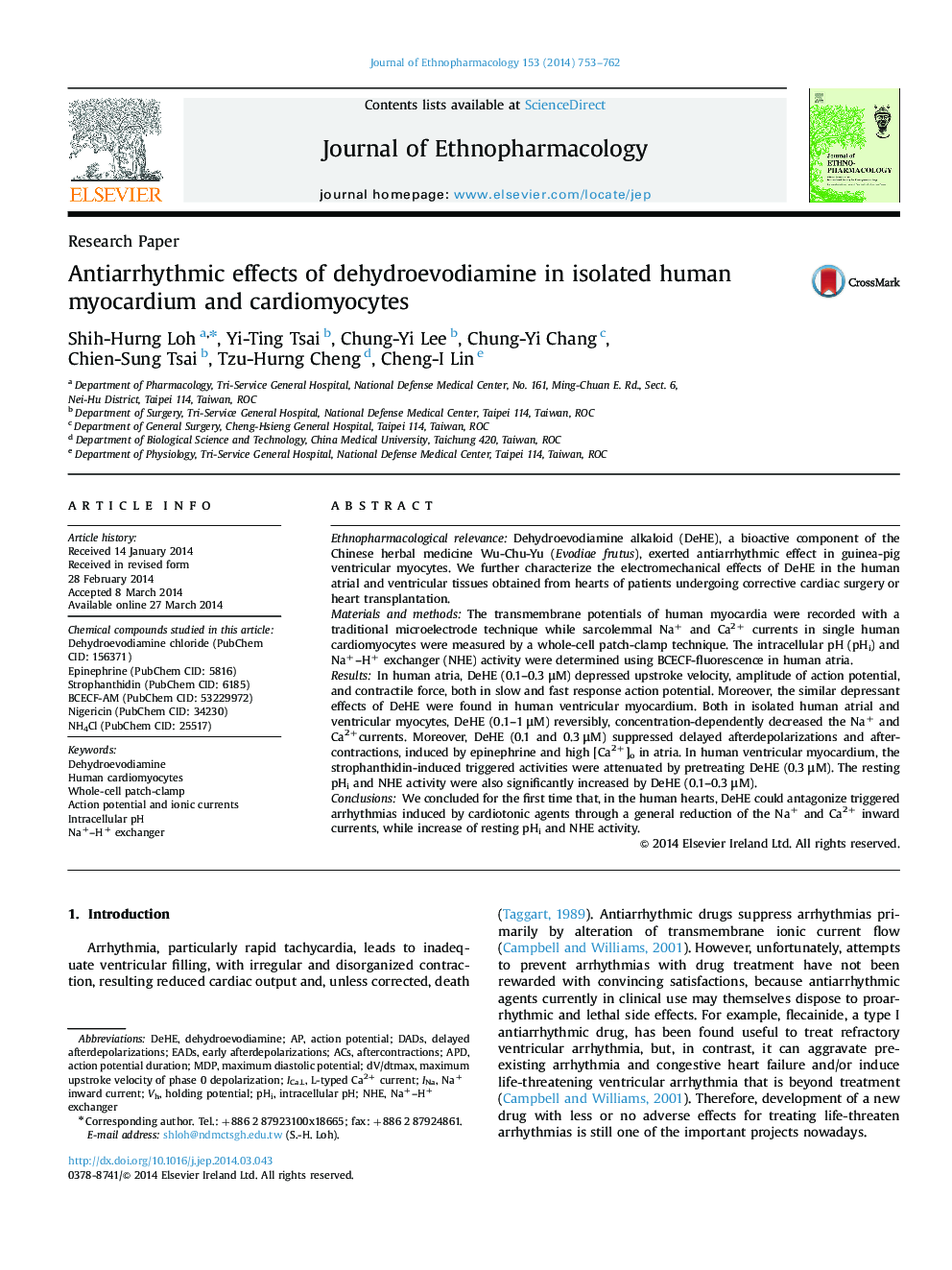| کد مقاله | کد نشریه | سال انتشار | مقاله انگلیسی | نسخه تمام متن |
|---|---|---|---|---|
| 2545105 | 1123934 | 2014 | 10 صفحه PDF | دانلود رایگان |

Ethnopharmacological relevanceDehydroevodiamine alkaloid (DeHE), a bioactive component of the Chinese herbal medicine Wu-Chu-Yu (Evodiae frutus), exerted antiarrhythmic effect in guinea-pig ventricular myocytes. We further characterize the electromechanical effects of DeHE in the human atrial and ventricular tissues obtained from hearts of patients undergoing corrective cardiac surgery or heart transplantation.Materials and methodsThe transmembrane potentials of human myocardia were recorded with a traditional microelectrode technique while sarcolemmal Na+ and Ca2+ currents in single human cardiomyocytes were measured by a whole-cell patch-clamp technique. The intracellular pH (pHi) and Na+–H+ exchanger (NHE) activity were determined using BCECF-fluorescence in human atria.ResultsIn human atria, DeHE (0.1–0.3 μM) depressed upstroke velocity, amplitude of action potential, and contractile force, both in slow and fast response action potential. Moreover, the similar depressant effects of DeHE were found in human ventricular myocardium. Both in isolated human atrial and ventricular myocytes, DeHE (0.1–1 μM) reversibly, concentration-dependently decreased the Na+ and Ca2+currents. Moreover, DeHE (0.1 and 0.3 μM) suppressed delayed afterdepolarizations and aftercontractions, induced by epinephrine and high [Ca2+]o in atria. In human ventricular myocardium, the strophanthidin-induced triggered activities were attenuated by pretreating DeHE (0.3 μM). The resting pHi and NHE activity were also significantly increased by DeHE (0.1–0.3 μM).ConclusionsWe concluded for the first time that, in the human hearts, DeHE could antagonize triggered arrhythmias induced by cardiotonic agents through a general reduction of the Na+ and Ca2+ inward currents, while increase of resting pHi and NHE activity.
Figure optionsDownload high-quality image (155 K)Download as PowerPoint slide
Journal: Journal of Ethnopharmacology - Volume 153, Issue 3, 14 May 2014, Pages 753–762